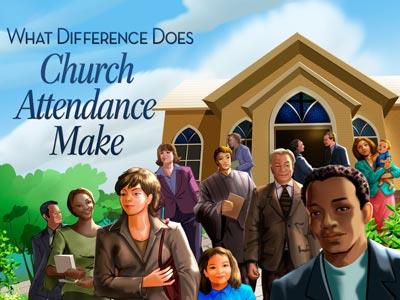-
Paul The Church Planter
Contributed by Paul Robinson on Mar 28, 2023 (message contributor)
Summary: The Apostle Paul is probably the greatest church planter in the history of the church. What can we learn from him, and how should we implement it into our modern times?
It is estimated that the Apostle Paul traveled a total of 17,285 miles! It is the equivalent of going from Jerusalem to San Francisco and then back to New York City. During his three missionary journeys alone, Paul covered some 8,000 miles by land and sea.
Paul was a preacher. His passion was to get the gospel to everyone he could. He was a traveler. He was always on the move because he wanted more and more people to hear the Good News. He was a missionary, a church planter. If a city didn’t have a local church, he was happy to start one with whoever he could find. He was an evangelist. He would travel back to areas he had previously been to encourage Christians and spend time with them.
Paul’s missionary travels took him from Jerusalem to Asia Minor to cities such as Thessalonica, Athens, Philippi, Antioch, and even out into the middle of the ocean.
In this message, we will look at Paul’s three missionary journeys recorded in the book of Acts by analyzing three similar characteristics found in all three journeys.
1. UPON ARRIVAL IN A CITY, PAUL PREACHED THE GOSPEL
Paul felt that he had an obligation to preach the gospel. He says in I Corinthians 9:16, “For though I preach the gospel, I have nothing to glory of: for necessity is laid upon me; yea, woe is unto me, if I preach not the gospel!”
Paul would always preach to the Jews first. Look at Acts 13:5, 14, 17:2-3, 19:8. The synagogue was a dangerous place for a gospel preacher. The Jews were hostile to the gospel, seeing it as a cult. Most the time, they would have nothing to do with it, and so Paul would then give the gospel to the Gentiles (read Acts 13:46).
Many were saved because of Paul’s preaching. On his first missionary journey, Paul preached to a huge group of people (almost the whole city) in Antioch in Pisidia. Read Acts 13:48. Because of Paul’s preaching, Lydia (the purple dyer) was saved; the demon-possessed girl of Philippi was saved; the Philippian jailor was saved; Jews and Gentiles alike were saved.
Paul was never afraid to give the gospel, no matter who his audience was. A good example of this is found in Acts 17. His audience: Epicureans and Stoics, philosophers who loved to sit around and discuss religious matters. The highly educated Paul knew just how to speak to them. Read verses 22-31. Their response: verses 32-34.
Paul was responsible for planting churches in Corinth, Iconium, Lystra, Derbe, Ephesus, Philippi, Thessalonica, as well as helping others who would start churches.
Not only did Paul plant these churches, often he tried to come back and visit them in order to encourage the believers there and see how things were going. Read Acts 15:36, 41.
2. IN RESPONSE TO PREACHING, THERE WAS ALWAYS PERSECUTION
The Bible makes it clear that we will at times be persecuted for the faith. No one experienced this more than the Apostle Paul. While he saw great success with people being saved from his preaching, he also suffered severe persecution. Let’s look at a few examples.
1st missionary journey: Persecution by the Jews in Antioch in Pisidia cause Paul and Barnabas to go to the cities of Lystra and Derbe. Paul preaches. Persecution: read Acts 14:19. Paul’s response: verse 20.
2nd missionary journey: The healing of the demon-possessed girl in Philippi causes an uproar, which leads to beatings and prison for Paul and Silas. Read Acts 16:19-24. Paul’s response: verses 25-26. As a result, the Philippian jailor is saved, and so is his family.
3rd missionary journey: In Ephesus, there was an uproar over Paul’s preaching. Read Acts 19:24-32. Paul’s response: he didn’t actually do anything, instead the town clerk got up and calmed everyone down.
Paul was so familiar with persecution that he made a list. Read II Cor. 11:23-28. Few have suffered as Paul suffered. And yet, the Bible tells us in II Timothy 3:12, “Yea, and all that will live godly in Christ Jesus shall suffer persecution.”
3. PAUL'S JOURNEYS WERE FILLED WITH MINISTRY COMPANIONS
As great and godly as Paul was, there is no way he could have traveled and preached on his own. He needed ministry companions, and he had some invaluable men and women who went with him to support and encourage him.
1st missionary journey: Barnabas, John Mark, Christians at Antioch
2nd missionary journey: Silas, Timothy, Luke, Aquila and Priscilla
3rd missionary journey: Apollos, Timothy, Erastus, Gaius, Aristarchus, Acts 20:4, Ephesian elders, Philip the evangelist, Mnason
These individuals meant a lot to Paul. Let’s notice what the apostle himself says about some of these people.
John Mark: Acts 15:37-40. II Tim. 4:11.
Barnabas: Gal. 2:9. He was one of Paul’s closest companions.

 Sermon Central
Sermon Central



